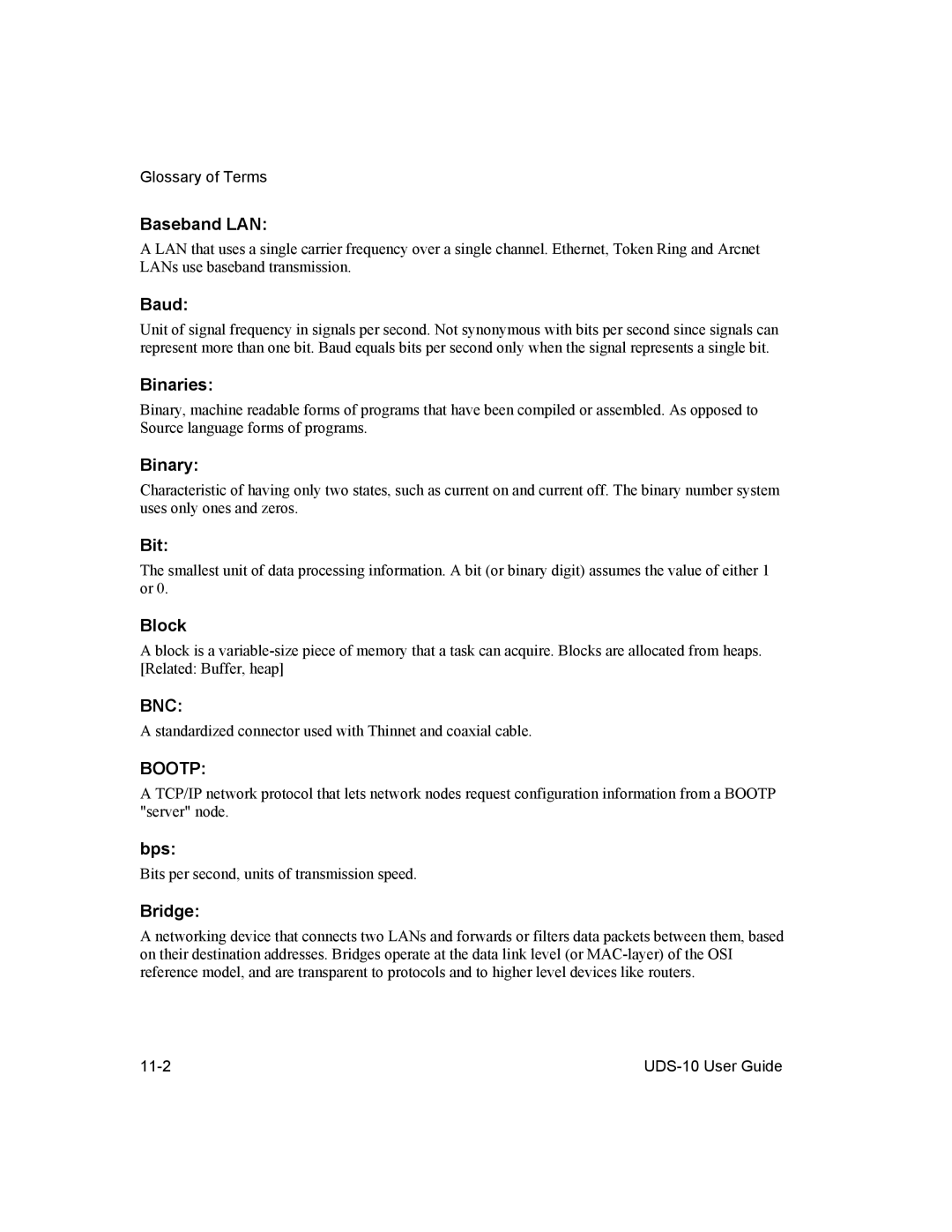Glossary of Terms
Baseband LAN:
A LAN that uses a single carrier frequency over a single channel. Ethernet, Token Ring and Arcnet LANs use baseband transmission.
Baud:
Unit of signal frequency in signals per second. Not synonymous with bits per second since signals can represent more than one bit. Baud equals bits per second only when the signal represents a single bit.
Binaries:
Binary, machine readable forms of programs that have been compiled or assembled. As opposed to Source language forms of programs.
Binary:
Characteristic of having only two states, such as current on and current off. The binary number system uses only ones and zeros.
Bit:
The smallest unit of data processing information. A bit (or binary digit) assumes the value of either 1 or 0.
Block
A block is a
BNC:
A standardized connector used with Thinnet and coaxial cable.
BOOTP:
A TCP/IP network protocol that lets network nodes request configuration information from a BOOTP "server" node.
bps:
Bits per second, units of transmission speed.
Bridge:
A networking device that connects two LANs and forwards or filters data packets between them, based on their destination addresses. Bridges operate at the data link level (or
